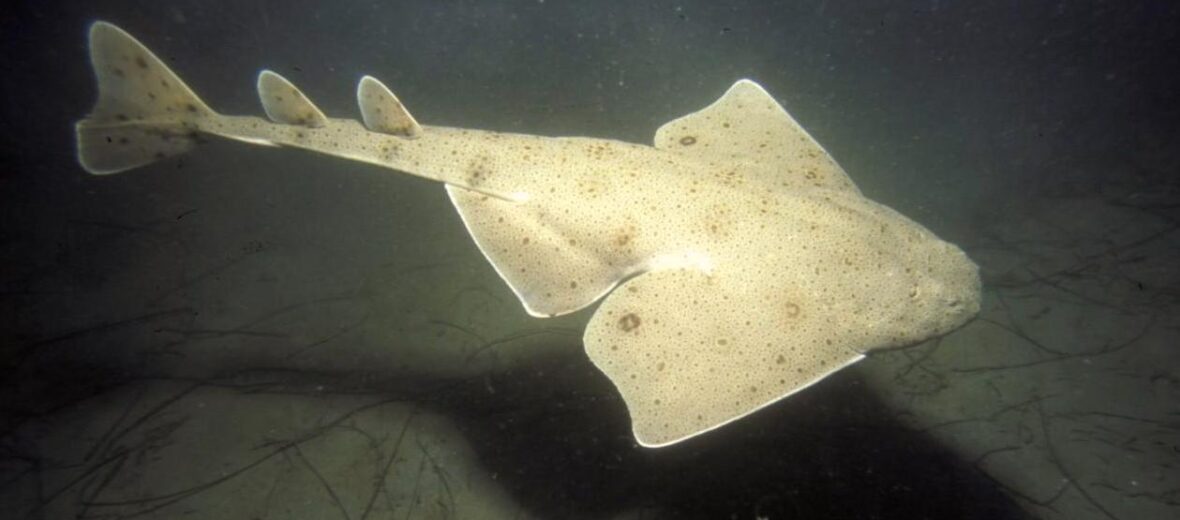
Angel sharks are quite different from many other sharks. First, they have flat bodies and very long pelvic and pectoral fins, thus making them look much like a ray. These bottom-swimming sharks use their fins to steer, like other sharks do. Angel sharks can be found along the coasts of California, Alaska, Mexico, Chile, and Costa Rica. They prefer warm, tropical waters and are typically found in bays and estuaries. There are approximately 23 known species of angel sharks found all over the world. They spend most of their time buried in the sand near coral reefs at depths of up to 500 feet.
First the Stats…
Scientific name: Squatina
Weight: Up to 77 lbs.
Length: Up to 56 feet
Lifespan: Up to 35 years
Now on to the Facts!
1.) These sharks have a pair of barbels on their snout which are used for prey detection, via vibration.
2.) Their pair of 5 gills are located on the side of their body.
3.) Primary prey items include: crustaceans, fish, mollusks, and squid.
4.) Angel sharks hide in wait until a prey item approaches and then they open their mouths and swallow their food whole with a single gulp that only takes 1/10th of a second!
5.) On occasions angel sharks are referred to as monkfish and even “sand devils”.
But wait, there’s more on the angel shark!
6.) Angels are migratory and move towards the poles, hugging along the ocean coasts.
7.) Like many sharks, they are nocturnal (active at night).
Did you know…?
They can remain motionless and don’t have to move in order to pump oxygenated water over their gills. They instead have special spiracles on top of their heads that pump water to their gills.
8.) Human attacks are rare and typically only happen when the shark is stepped on. The bites can be very painful, as angel sharks have long, sharp teeth.
9.) The angel shark has 9 rows of teeth on their top jaw and 10 rows on their bottom jaw. These teeth are razor sharp!
10.) Typically solitary, they will come together to mate during the spring and summer.
But wait, there’s still more on the angel shark!
11.) Females are ovoviviparous (the eggs hatch inside the female’s body and then are born live).
12.) The female shark births about 8 – 13 pups, yet only 20% of those reach adulthood.
Now a Short Angel Shark Video!
Also, check out the Critter Science YouTube channel. Videos added frequently!
Want to suggest a critter for me to write about? Let me know here.



